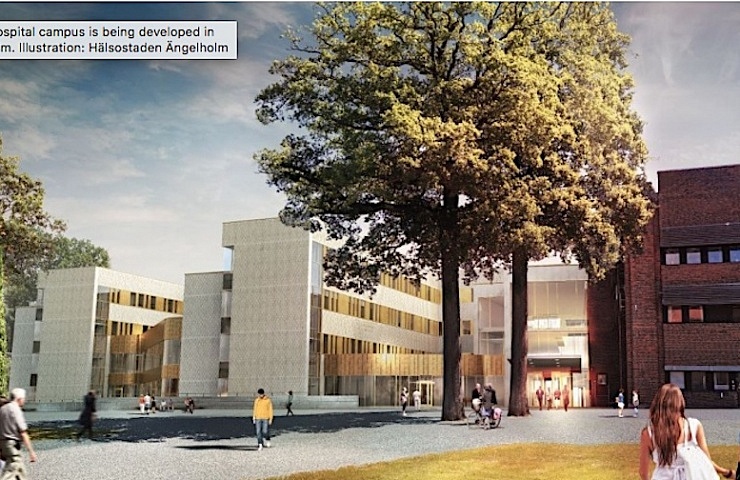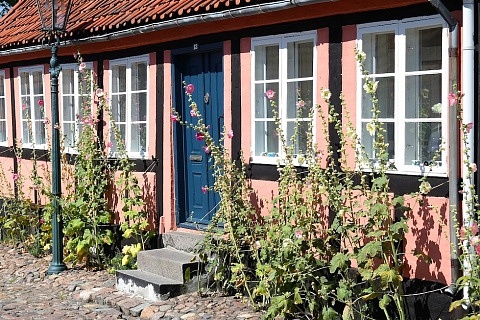by Lisa Altenberger, Nordic Investment Bank
“Nobody is very keen on being in hospital; most patients are happy to go home as soon as possible. Our goal is not only to improve the efficiency and speed of treatment, but also people’s experience with it”, says Wendy Dropp, Project Developer at Hälsostaden, before the opening of a NIB-financed hospital prototype in Ängelholm, Southern Sweden.
Hospitals are a central part of every healthcare system, and need to regularly evolve their infrastructure and facilities to keep up with new treatments and technology. In Ängelholm, a coastal town in southern Sweden with a population of 42,000, a new hospital building named Hälsogallerian will be opened on 12 June as part of a pilot for a new hospital concept – Hälsostaden Ängelholm.
“Hälsogallerian will house a rehabilitation and stroke department, as well as a nursing ward, treatment rooms and space for physical therapy”, explains Mrs Dropp.“The facility is part of a larger restructuring programme, titled Hälsostaden Ängelholm.”
“A morgue, an operations and service building and a new public square in the centre of the hospital grounds have already been completed. The main building is still being renovated.”
Sweden’s healthcare system usually ranks among the best in OECD studies, but some regional inequalities in access to care and long waiting times have been criticised in the past.
“The Hälsostanden Ängelholm project was initiated in 2009, when the need to develop and renew the hospital area and its operations became apparent”, Mrs Dropp says. “We wanted to create infrastructure that supports a seamless chain of care and focuses on the individual.”
“The project unites the hospital, the municipality and primary care under one roof.”
Green hospitals and meeting points
“We set out to replace ageing buildings with modern facilities and to re-organise the hospital’s structure”, says Mrs Dropp. “We also started to consider the overall role that healthcare facilities play in society.”
“One of our goals was to integrate the new hospital area into Ängeholm’s community, and to change the view people have of healthcare institutions”, Mrs Dropp explains. “It doesn’t have to be a segregated space you only go to when you are sick or injured. It can be a meeting point that improves the interaction with patients and their families.”
“We wanted to create infrastructure that supports a seamless chain of care and focuses on the individual.”
— Wendy Dropp, Project Developer at Hälsostaden, before the opening of a NIB-financed hospital prototype in Ängelholm, Southern Sweden.
“For instance, there is a new public pool in the middle of the hospital area that is open to the whole town.”
The new hospital buildings will all comply with the second highest level under the Swedish certification system for green buildings, Miljöbyggnad silver.
“It was clear from the beginning that the new facilities should be both energy efficient and climate smart. Also, they are designed to be flexible enough to be adjusted to future needs, saving on further construction costs.”
Cooperating for better care
Demographic changes, such as increasing life expectancy and the rise of chronic illnesses, are changing how treatment and the continuity of care are approached.
Co-ordination between hospitals, primary care and local authorities was identified as the biggest challenge to the continued high standard of the Swedish healthcare system.
“Parallel to the hospital renovation, another joint project has been started by Skåne County and the municipality of Ängelholm. The project focuses on elderly patients with multiple illnesses, and has a common organisation, budget and management.”
“In these respects, Hälsostaden is a pilot project for Skåne County that aims to be a role model for erasing borders between principals.”

 Deutsch
Deutsch




Leave a Reply